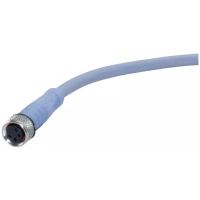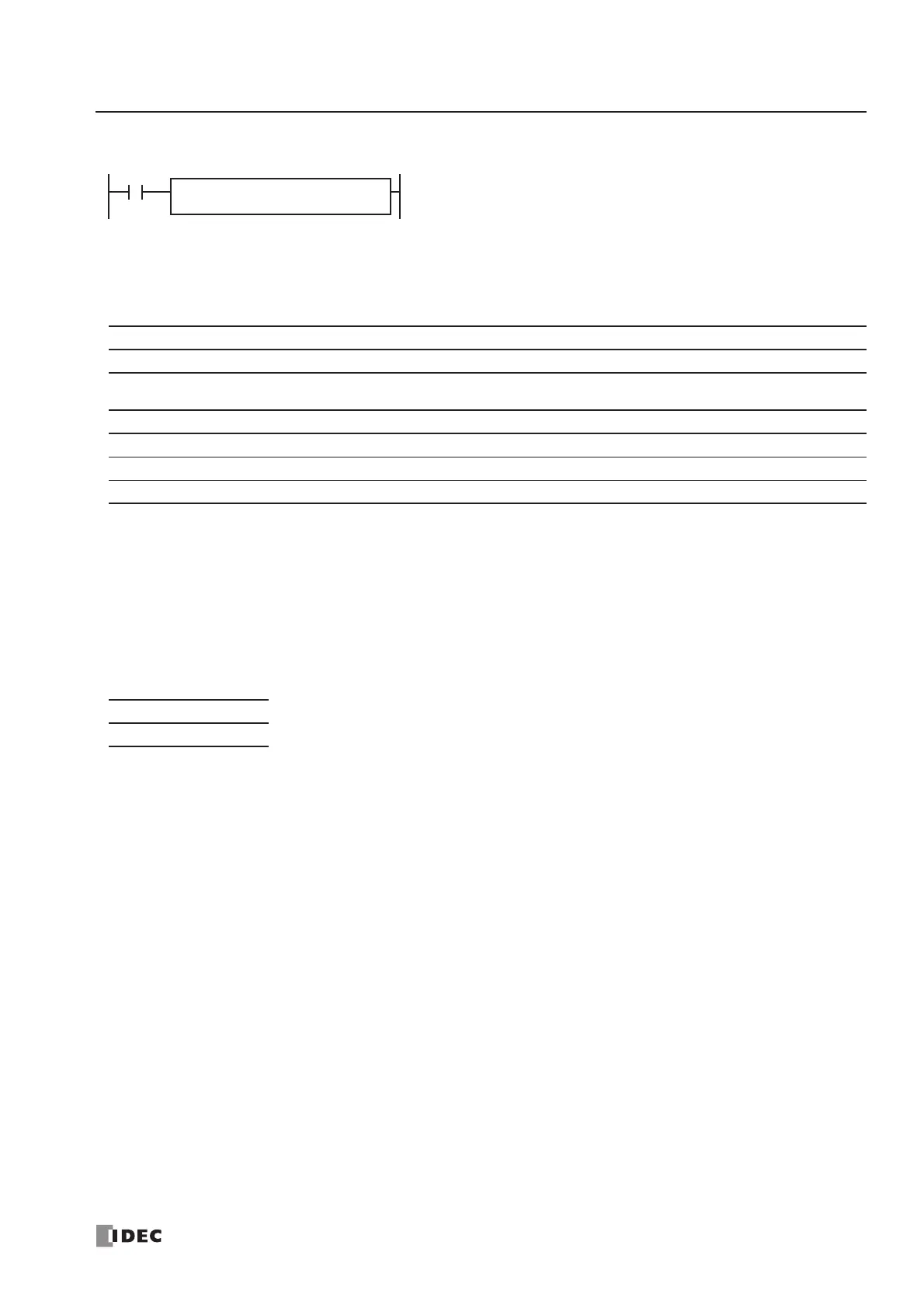14: DATA CONVERSION INSTRUCTIONS
« FC4A MICROSMART USER’S MANUAL » 14-3
HTOA (Hex to ASCII)
Applicable CPU Modules
Valid Operands
For the valid operand number range, see pages 6-1 and 6-2.
When T (timer) or C (counter) is used as S1 or S2, the timer/counter current value is read out.
The quantity of digits to convert can be 1 through 4. Make sure that the quantity of digits designated by S2 is within the
valid range. If the S2 data is out of the valid range, a user program execution error will result, turning on special internal
relay M8004 and the ERR LED.
Since the HTOA instruction is executed in each scan while input is on, a pulse input from a SOTU or SOTD instruction
should be used as required.
Valid Data Types
FC4A-C10R2/C FC4A-C16R2/C FC4A-C24R2/C FC4A-D20K3/S3 FC4A-D20RK1/RS1 & FC4A-D40K3/S3
XXX X X
Operand Function I Q M R T C D Constant Repeat
S1 (Source 1) Binary data to convert XXXXXXX X —
S2 (Source 2) Quantity of digits to convert XXXXXXX 1-4 —
D1 (Destination 1) Destination to store conversion results —————— X — —
W (word) I (integer)
X—
S1 → D1, D1+1, D1+2, D1+3
When input is on, the 16-bit binary data designated by S1 is read from
the lowest digit as many as the quantity of digits designated by S2, con-
verted into ASCII data, and stored to the destination starting with the
operand designated by D1.
The quantity of digits to convert can be 1 through 4.
HTOA(W) S1
*****
S2
*****
D1
*****
When a bit operand such as I (input), Q (output), M (internal relay), or R (shift register) is
designated as the source, 16 points are used.
When a word operand such as T (timer), C (counter), or D (data register) is designated as the
source or destination, 1 point is used.

